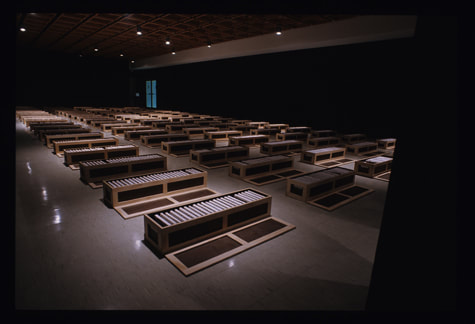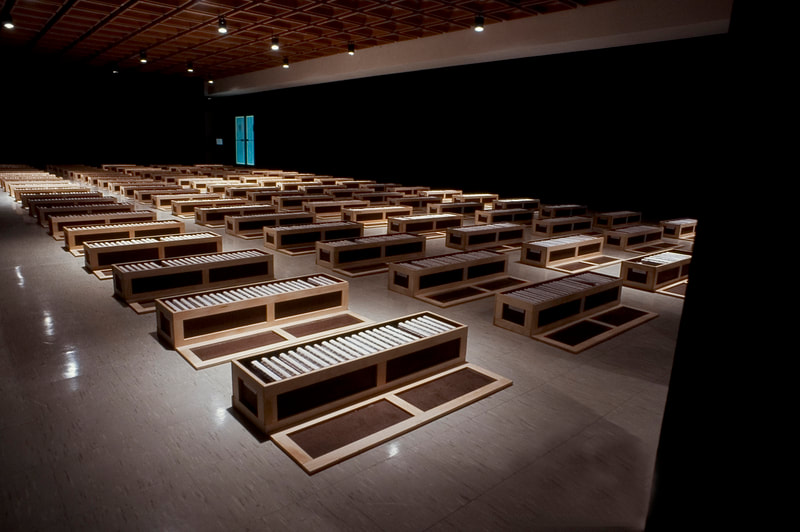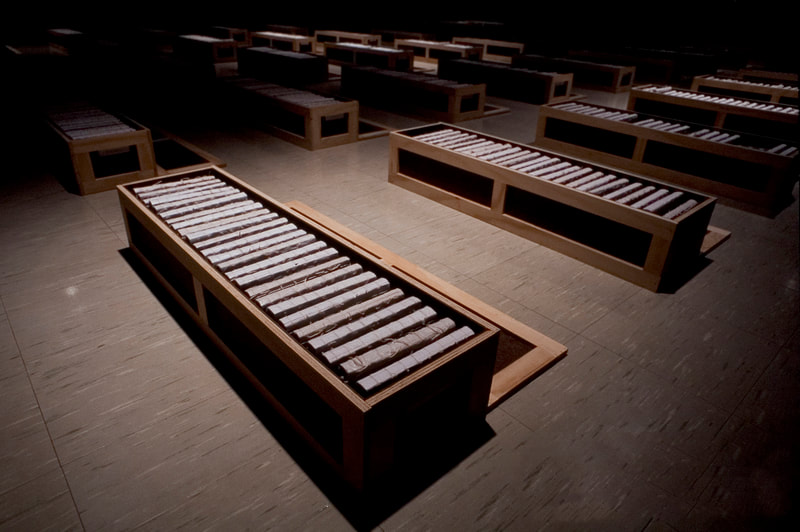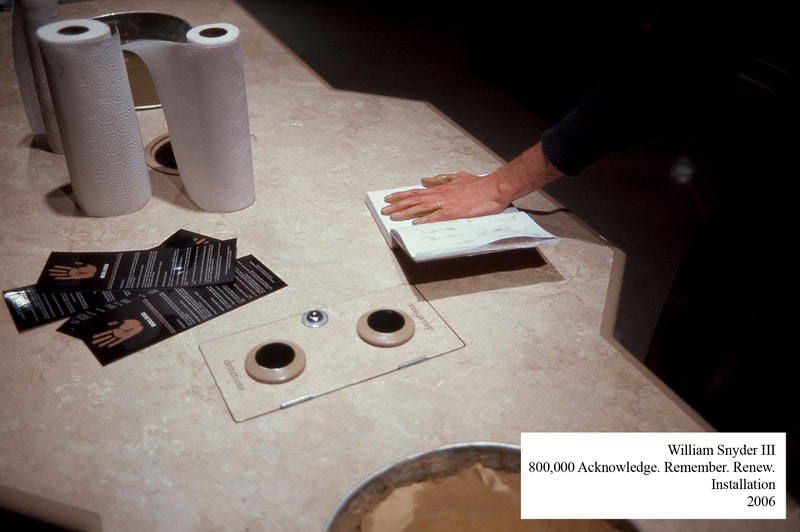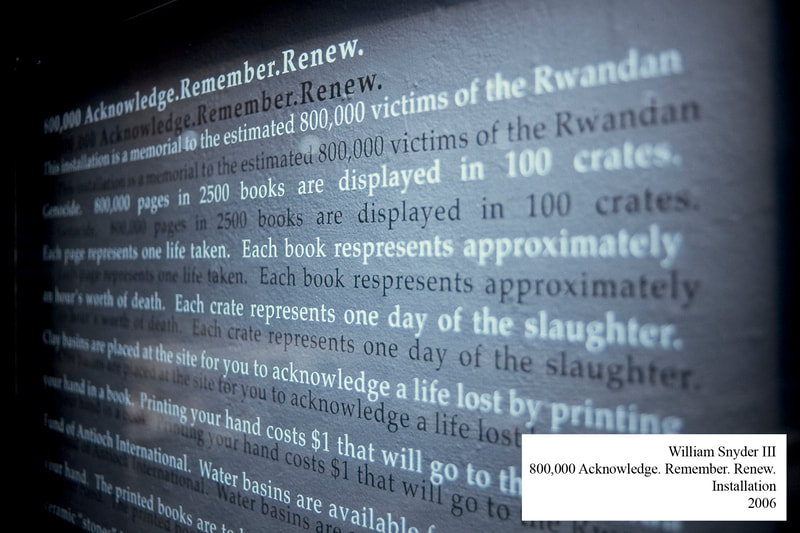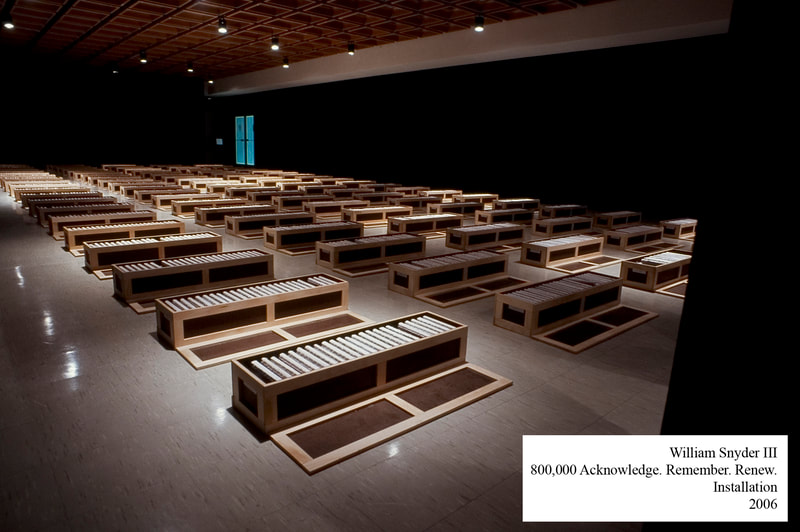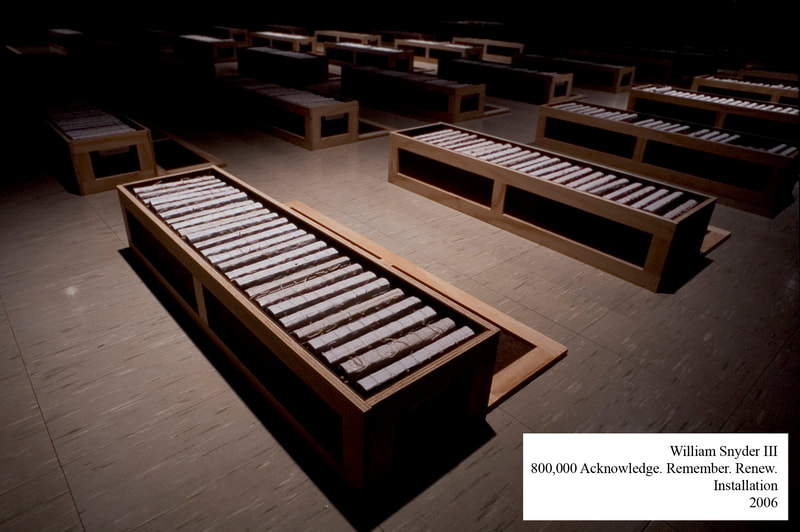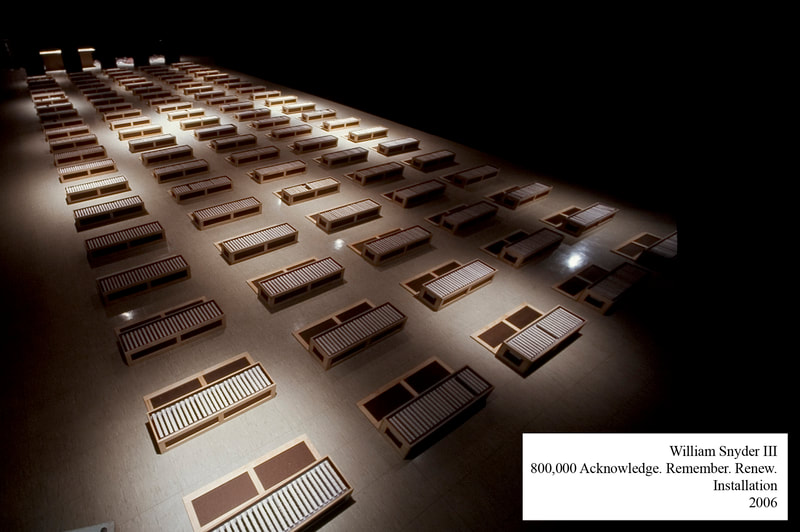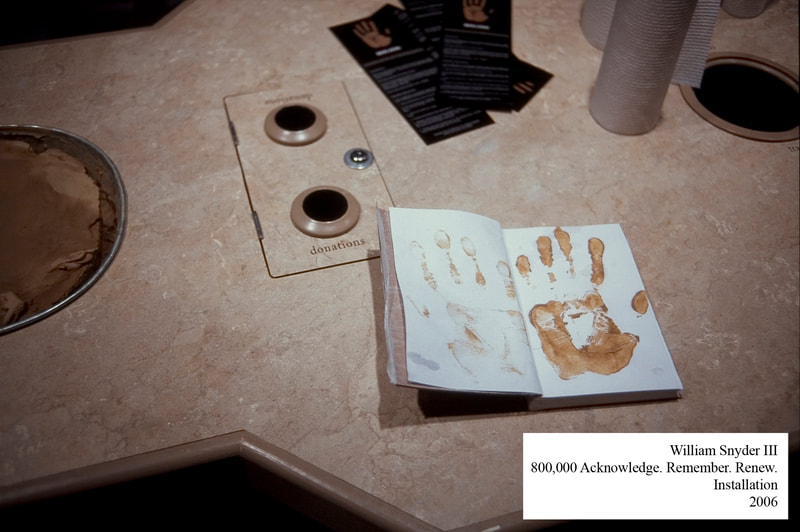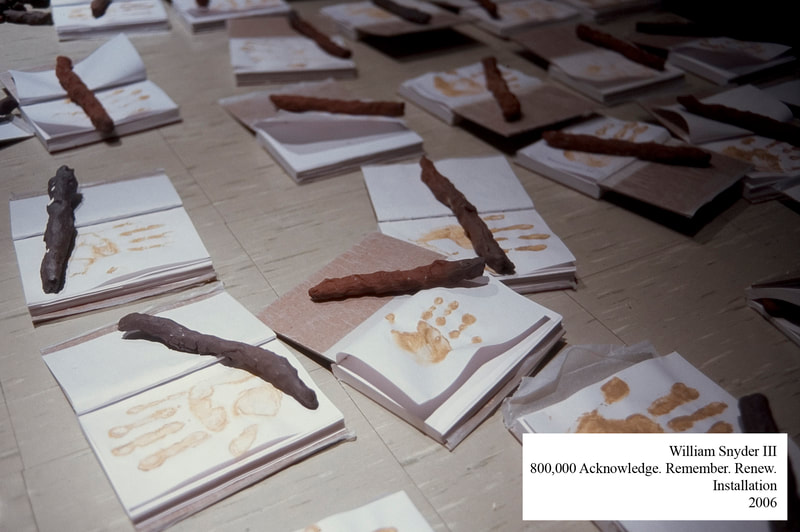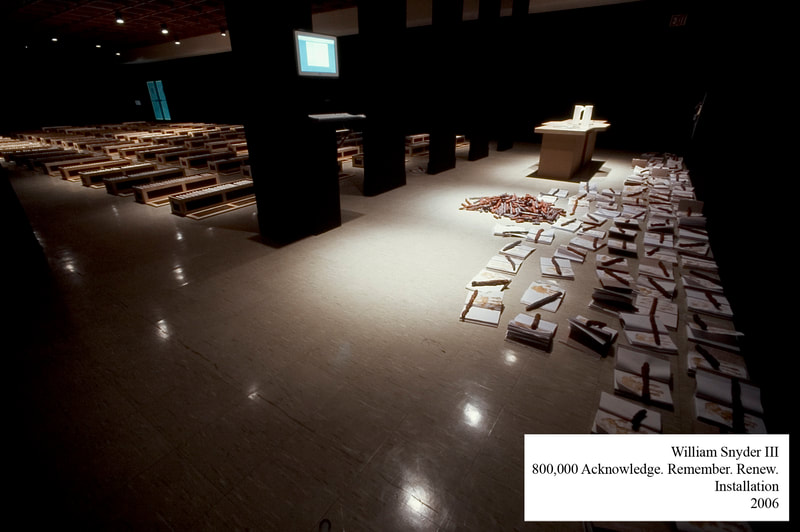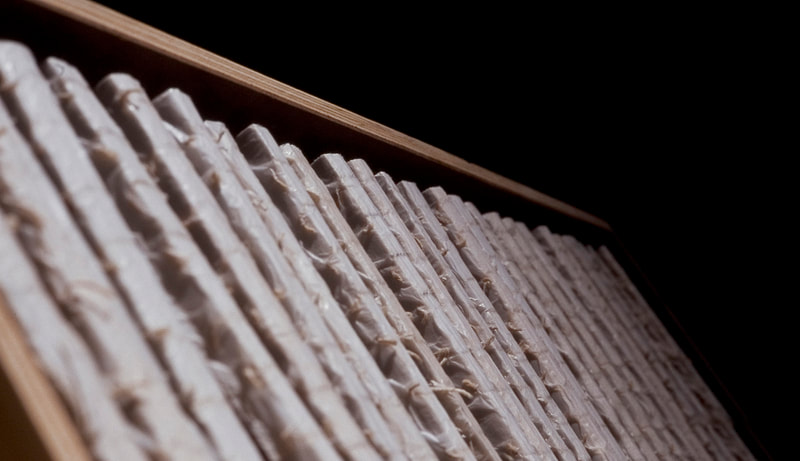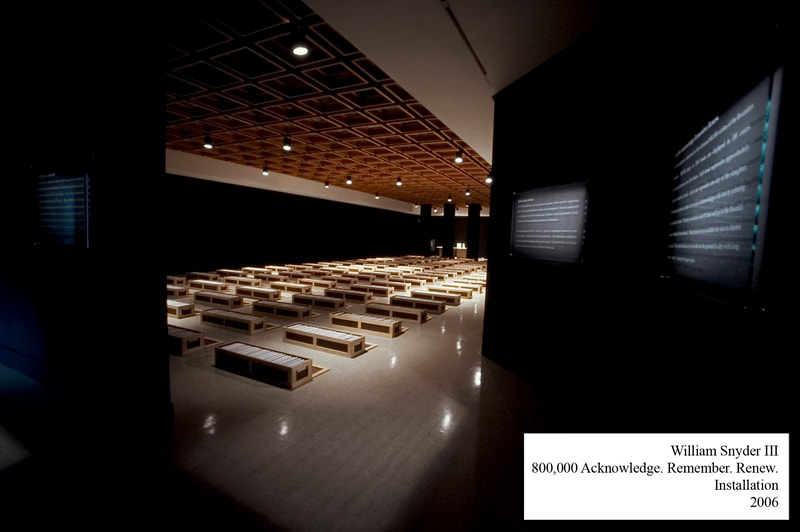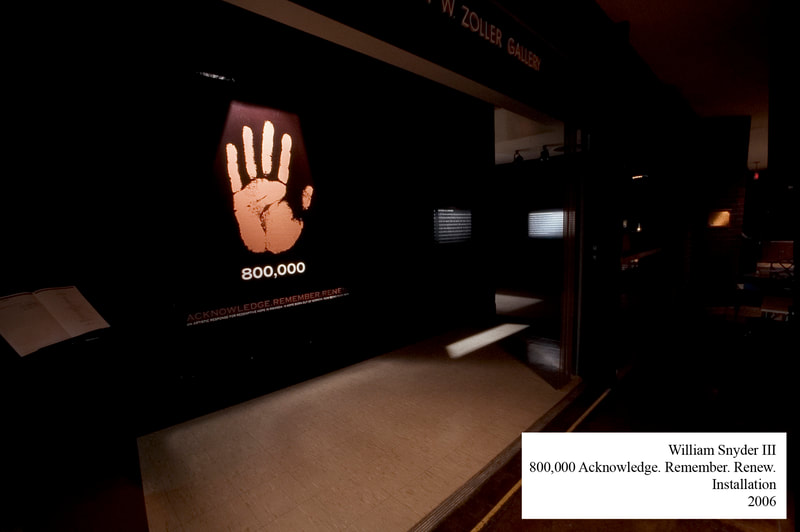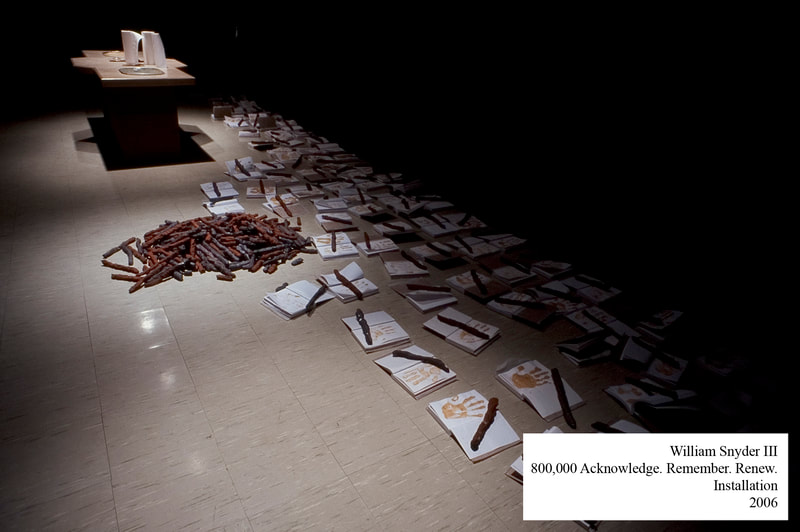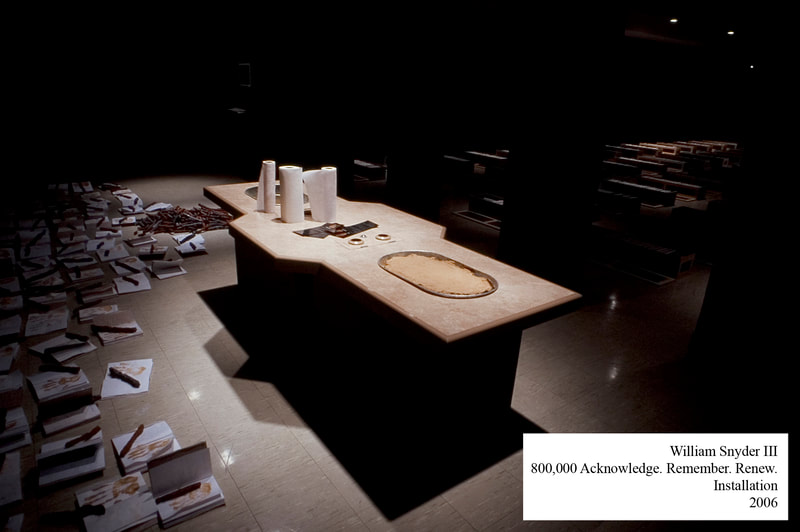historical contextIn 1994, Rwanda experienced a tribal genocide during which an estimated 800,000 people were killed in 100 days. The myths of race and ethnicity built between the majority Hutu and minority Tutsi during colonization, culminated into genocide after the April 6, 1994, assassination of the Hutu President, Habyarimana and others in a plane crash. The crash incited the Rwandan Military, the Hutu Power, and the Interhamwe (village militia) to begin eliminating all Tutsi and moderate Hutu resulting in over 10% of the Rwandan population being killed. Even now, Rwanda continues to struggle with the forces of poverty and a society rife with personal loss.
|
EXHIBITIONS2022 - Duke Gallery Court, James Madison University, VA
2018 - Rwanda Beautiful, West Chester Univ, West Chester, PA 2014 - UN Headquarters, Secretariat Building, New York City, NY 2013 - Under the Rug, La Roche College, New Rochelle, NY 2009 - MCLA, North Adams, MA 2009 - The Hybrid Book, University of the Arts, Philadelphia, PA 2007 - United Methodist Church, Bedford, PA 2006 - Central Pa Festival of the Arts, State College, PA 2006 - 21st Graduate Exhibition, Hub Galleries, Penn State 2006 - Zoller Gallery, Penn State |
|
The installation is made of 800,000 pages in 2500 books displayed in 100 crates: one page for each victim, one crate for each day of the war. The books have been hand-bound through the collaboration of the 800,000 team, six high schools, and three groups. An accompaniment track of music produced by a group from Harrisburg adds to the atmosphere.
Viewers of the exhibit both learned about the incident and also did something for the country in response. The historical context of the exhibit was available for viewing at the entrance, but the installation was interactive, giving the viewer that tangible means of helping. The project asked the viewer to acknowledge the war, remember the victims, and help the country by donating for projects in Rwanda. They could then place their handprint on one page of a book. The goal, therefore, was to have each life lost acknowledged, remembered, and then hope renewed, while raising funds for projects in Rwanda. A water building in Gitarama was funded with proceeds from the handprints. |
